When looking for a glass railing system to best suit your home, there are a plethora of options to choose from. Some materials are, naturally, sturdier, or more visually appealing than others. Moreover, each type of system comes with its own set of pros and cons. With that said, what are the main components of glass railing system materials? And how do you go about picking the right ones? Read along to find out!
Tempered Glass for Railing System
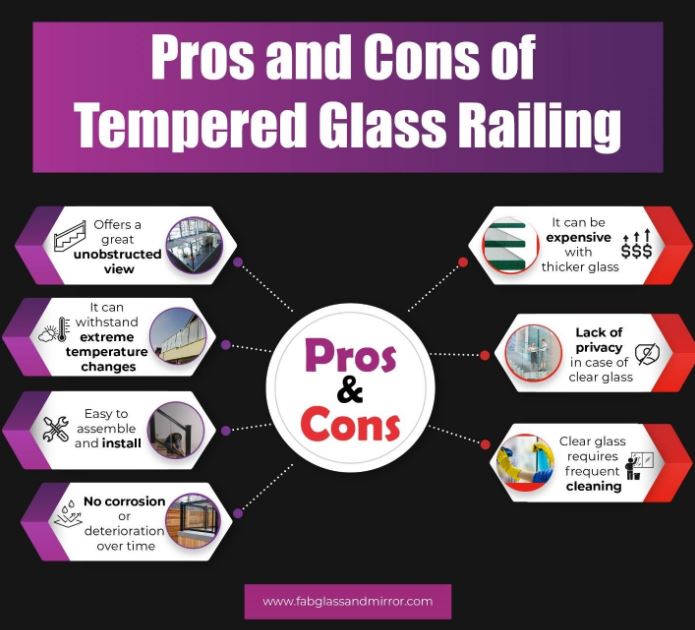
Tempered glass panels are a very tough and durable type of glass. Through a process called ‘tempering’, manufacturers will expose a standard piece of glass to heating and cooling. In a tempering furnace, the glass is heated up to 1200 degree then rapidly cooled. This practice is also known as quenching. Accordingly, the glass becomes five times stronger and tougher than its regular counterpart does. This process also makes it much safer. So, if the glass were to break, it will do so in small round pieces rather than shards. Tempered glass is ideal for railing systems, whether it’s for interior use or exterior.
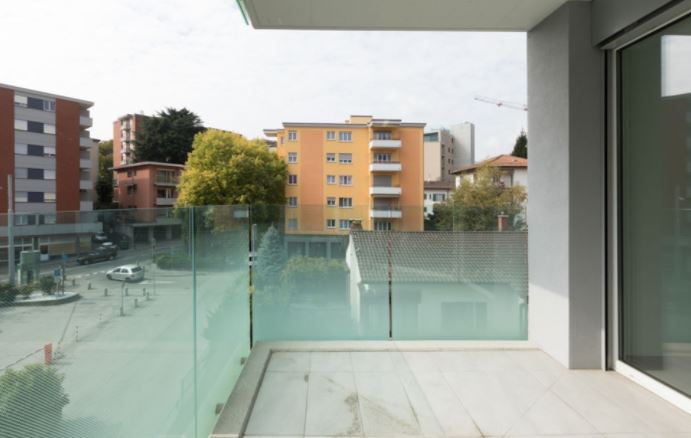
Pros
- Won’t corrode
- Offers a great unobstructed view
- Opens up the living space
- It can tolerate extreme temperature changes
- It requires little to no upkeep
- You can customize it
- Variety in options
- It’s very easy to assemble and install
Cons
- It can be expensive (depending on size, shape, and thickness)
- Lack of privacy (in case of clear or low iron glass)
- It requires regular cleaning (to avoid smudges, fingerprints, and blemishes)
– Stainless Steel, Wood or Aluminum balusters
- Stainless Steel Balusters

Whether it’s balcony railing or staircase balusters, stainless steel can resist anything from dust and water seeping to natural elements. This material is renowned for its longevity and sturdiness. It requires very little upkeep and maintenance while still maintaining a sleek polished finish.
In addition to that, stainless steel blends flawlessly into modern and industrial interiors alike. And because these balusters are made from readily available materials, they cost much less to manufacture. Not just that, stainless steel railings are very easy to assemble and install.
They don’t require elaborate tools or complex instructions. In fact, the whole process can be done on-site. Stainless steel will not corrode, nor accumulate dust, grime, and dirt. A spray of water, a cleaning agent of your choice, and a dry cloth will do the job. Not to mention how it beautifully complements glass railing systems.
- Wood Balusters
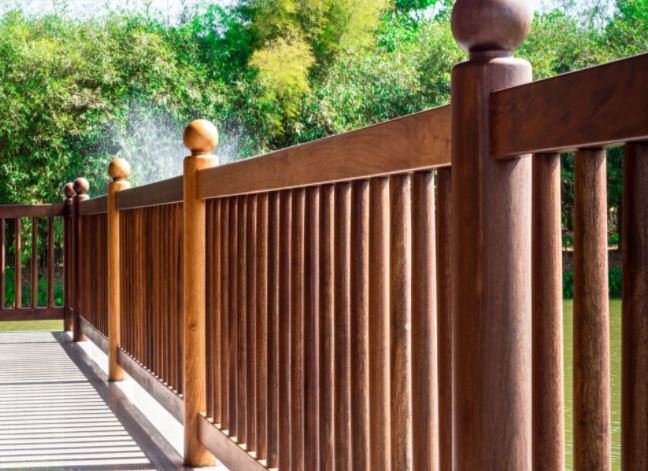
While wood is a truly timeless material and makes for gorgeous rustic decor, it can be a hassle to maintain. Wood balusters require constant upkeep for them to retain their polished and shiny look. If you decide to invest in wood, you not only invest money but also a good chunk of your time in maintenance.
If anything, you will have to use varnish on a regular basis. In addition to different chemicals to treat your wooden balusters and protect them from bacteria, fungus, and mould. This material also comes with a hefty price tag attached to it. Depending on the type of wood, the quality of workmanship, and the sourcing, prepare to go over-budget.
Regarding installation, wooden railings will require an on-site assembly. So, this might interfere with your day-to-day operations. With that said, if you want to maintain your home’s traditional aesthetic then this is the ideal option for you.
- Aluminium Balusters
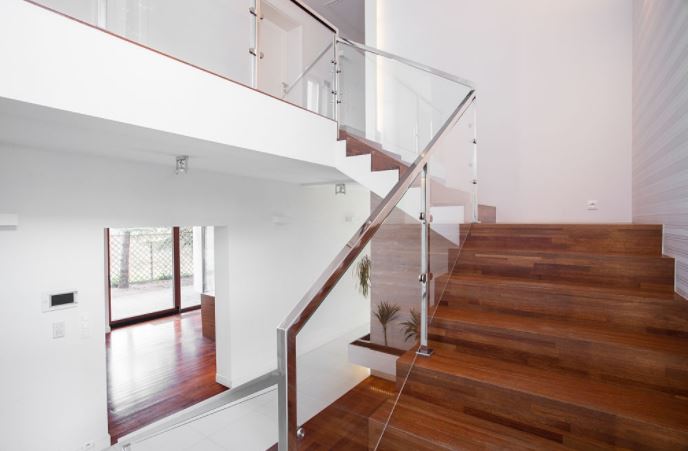
Aluminium balusters are very similar to stainless steel in appearance. However, they are much less expensive but they do come with a set of disadvantages. While quality and price don’t always necessarily go hand in hand, in this case, they do.
Aluminium is a great material, but it’s definitely not as sturdy nor long-lasting compared to stainless steel. In fact, its protective oxidation layer can fade over time.
It’s also very prone to scratches and blemishes, which makes it incredibly hard to clean. In addition to that, it requires heavier support than stainless steel. With that said, if you’re on a budget and need a substitute material for stainless steel, aluminium can be that.
Stairs material used in steps: Stone, Wood or Thick Glass
- Stone Stairs
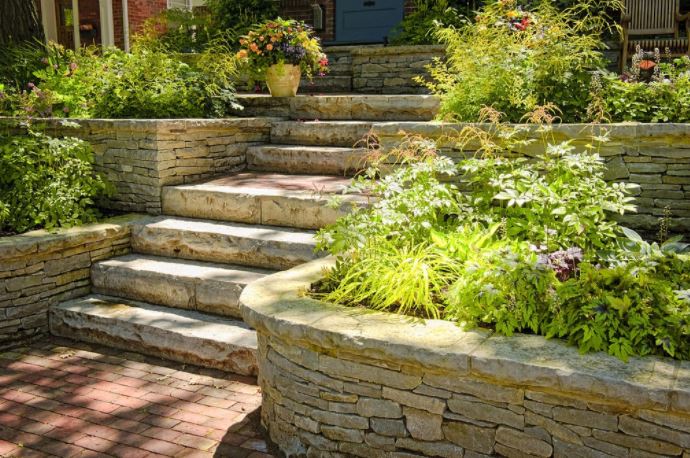
Stone is perhaps the most durable material of choice for staircase construction, especially compared to some types of wood. In fact, you might have noticed how most of those historic palaces and chateaux have survived for centuries. And that’s because most of the construction back then, if not all, solely relied on stone.
Unlike wood, stone stairs won’t rot, corrode, or splinter. The whole maintenance process only requires sweeping, mopping, and even resealing. It provides your home with that classic traditional look and can add so much resale value later on. All of that with the added benefit of that dramatic touch a spiral stone staircase can have. This makes it a focal point in your home. Not only that but it also creates that ‘wow factor that a lot of interior designers seek.
- Wood Stairs
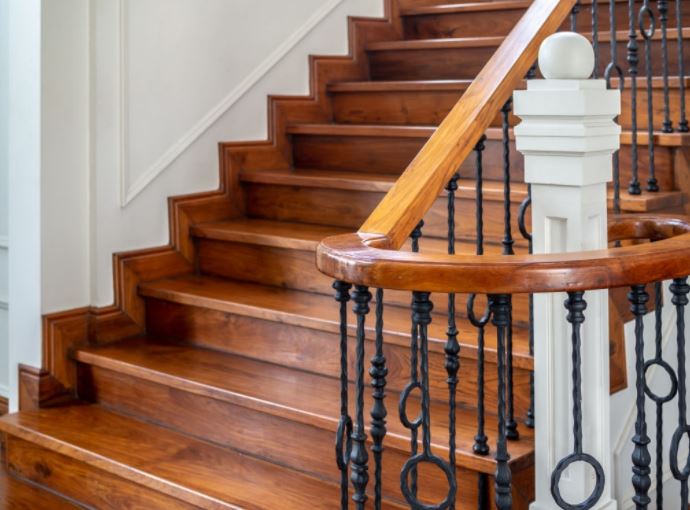
Wood stairs, especially with no carpeting, can be a safety hazard when you have children. You might prefer wood because it offers a unique aesthetic and classic appeal. However, it does require a lot of upkeep. Wood staircases can last much longer if you polish them more often. While solid wood is the most durable, it can be quite a costly expense. On the other hand, engineered wood is cheaper but not as sturdy. Though it does have the upper hand when it comes to resisting extreme temperature fluctuations and humidity. Unlike solid wood that contracts and expands depending on what season it is.
- Thick Glass Stairs

Glass stairs have become tremendously popular in modern architecture and interior design. So much so that thick glass can be implemented into both tread steps and railings alike. They offer a stunning view that no other material can even compare.
In addition to that, they don’t block natural light, unlike opaque and robust materials like stone, wood, or concrete With safety in mind, thick glass stairs are designed using three-layer laminated safety glass. So, these stairs can withstand pressure, heavy impact, and any type of fracture.
Difference between Frameless glass railing material and framed glass railing system materials
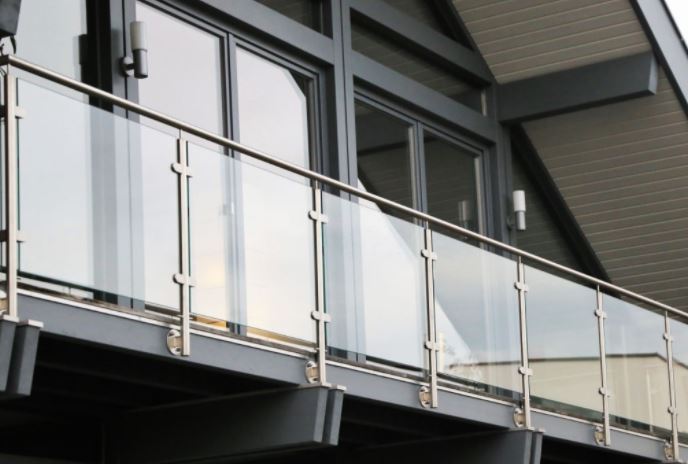
Framed glass railings are the most common type of railing systems. Especially, since they offer the best combination of safety and luxury. These systems use a variety of materials. Namely wood, stainless steel or aluminium. Cost is one of the major benefits of this railing system.
Frameless glass railings don’t have a support system so they require thicker glass panels. This usually comes as more expensive than framed glass railings. Since the latter has sufficient support through the use of sturdier materials.
Even so, frameless glass railings do have an extravagant appeal. They provide you with an unobstructed view and allow more light in. With that said, households that have pets or kids do prefer the safety and protection that framed glass railings provide.




 POSTED BY
POSTED BY 

